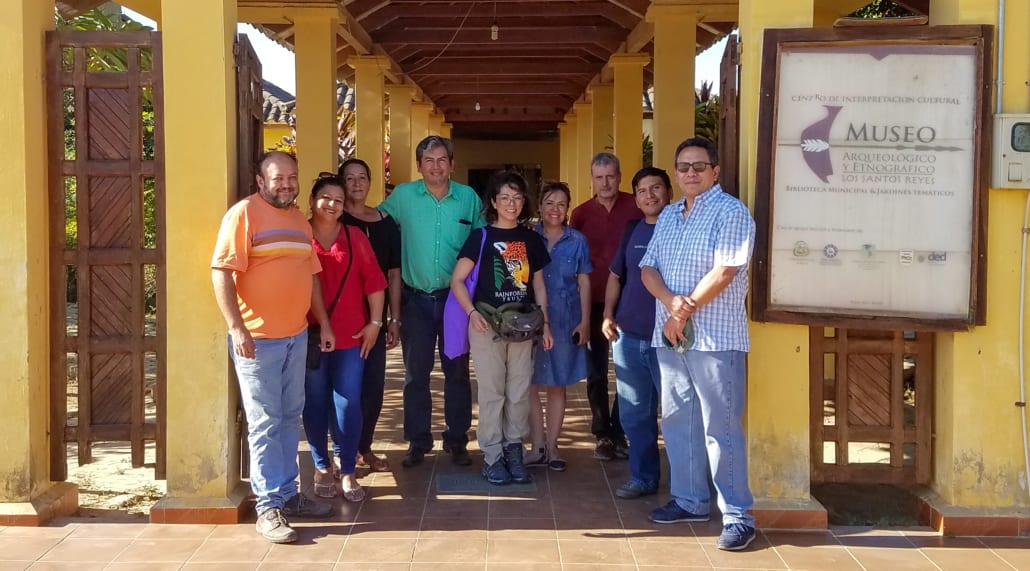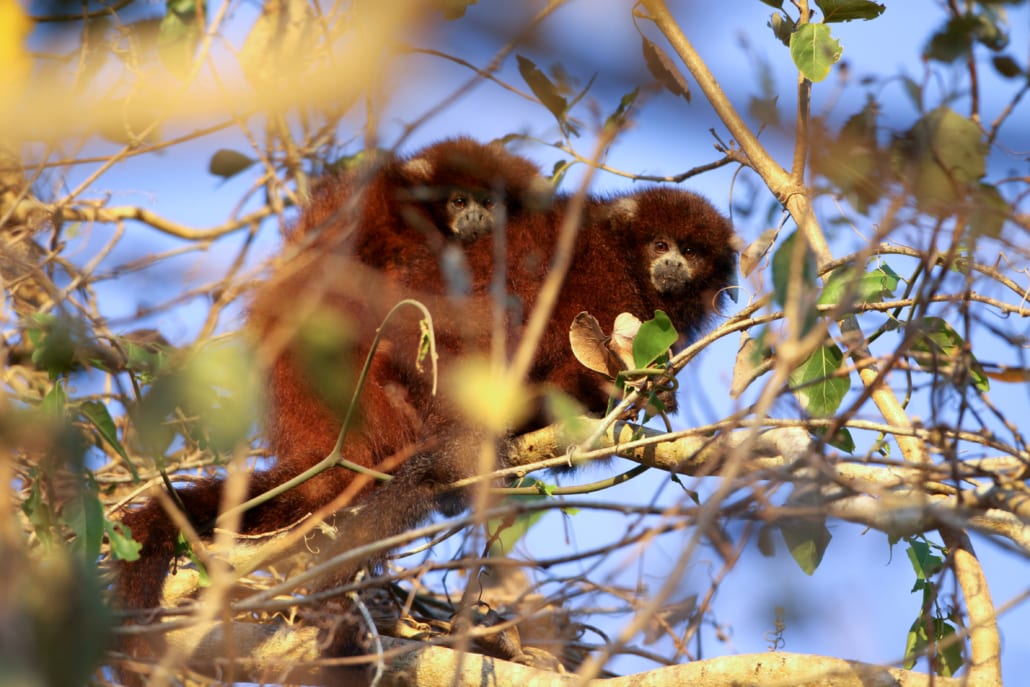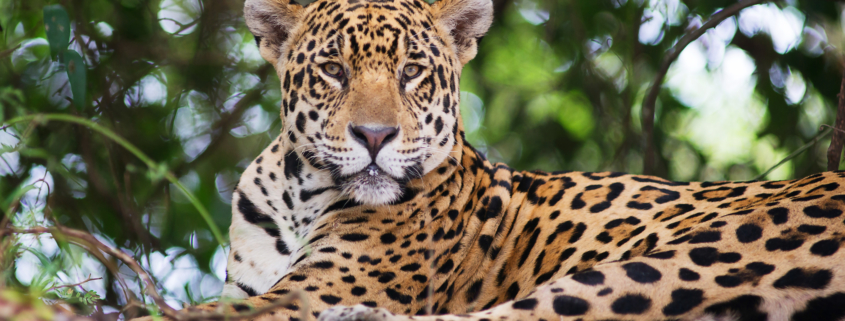New Reserve Safeguards Vital Landscape in Bolivia
This week, Rainforest Trust and partner Wildlife Conservation Society-Bolivia (WCS-Bolivia) established the Rhukanrhuka Municipal Reserve. The 2,123,749-acre reserve in the Beni region protects grasslands found in the transition area between the Sub-Andean and Llanos de Mojos Ecosystems. The Beni grasslands, an area twice the size of Portugal, is South America’s third largest savanna complex and one of Bolivia’s most vital ecoregions.

Rainforest Trust South America Conservation Officer Rossana Merizalde with the WSC-Bolivia team. Photo by WCS-Bolivia.
This expansive tropical savanna and the pristine forests found to the north contain multiple rivers that follow the eastern slope of the Andes Mountains. A combination of rain during the wet season and snowmelt from the Andes causes the rivers to flood almost half of the land each season. This flooding allows an extensive variety of wildlife to call this region home.
The new reserve will help safeguard important populations of emblematic and threatened mammal species, including Jaguars and Pumas. Other resident mammals include Maned Wolves and both Collared and White-lipped Peccaries. The area is home to two endemic Titi monkeys, as well as Black-faced Black Spider Monkeys, two species of Howler Monkeys and Tufted Capuchins.
In the northern section, the reserve is part of the Rogaguado and Ginebra Lakes Important Bird Area (IBA). This wetland savanna habitat is home to a variety of wading birds such as the Cattle Egret, Maguari Stork, Jabiru, Wood Stork and Whistling Heron. The flooded areas attract birds including Black-collared Hawks, Sunbitterns, Sungrebes and Wattled Jacanas.
“The designation of this reserve will not only expand connectivity for wild species in a critical region of Bolivia, but will cement their long-term protection,” said Angela Yang, Rainforest Trust Chief Conservation Officer. “The new protected area is now almost twice as large as the originally proposed reserve due to the great collaborative work of our partner and stakeholders, especially the communities and municipal government.”
The Rhukanrhuka Municipal Reserve is a key part of a network of protected areas and indigenous lands. This network stretches over 34 million acres, from the snow-capped Andean peaks of Apolobamba near Peru to the Beni aluvial plains. Three indigenous titled lands, the Pilon Lajas Biosphere Reserve and the Santa Rosa de Yacuma Municipal Protected Area all border the reserve.

A pair of Titi monkeys in the new reserve. Photo by WCS-Bolivia.
The protected area will prevent further habitat loss from agricultural expansion. The reserve will also increase the landscape’s resilience to anthropogenic threats. Creating this reserve is an opportunity for local authorities to improve natural resource governance. Having a protected area allows the municipal government to increase vigilance over illegal settlements, timber extraction, fishing and hunting.
“We applaud the Municipal Government of Reyes, its communities and private ranchers for taking this huge step towards reconciling local livelihoods, sustainable development and cultural values; with the need to protect this vast wilderness and key species” said Dr. Lilian Painter, Country Director for WCS’s Bolivia Program.
WCS-Bolivia will provide expertise in protected area management, including the strategic vision and objectives, a financial strategy and participation mechanisms. They will support the Reyes municipal government in developing management programs focused on endangered species conservation, monitoring, control and vigilance, local participation, outreach and ecotourism.
Local people and the rancher’s association will support the initial identification of vulnerable areas and establish a protected area management committee comprised of regional stakeholder representatives. The management plan will take into account ecotourism opportunities, work to reduce the risk to key habitats and preserve environmental functions essential to local communities.
“Rainforest Trust is incredibly pleased to be partnering with WCS-Bolivia, the Municipal Government and the local communities in the protection of this extraordinarily important and richly biodiverse habitat,” said Mark Gruin, Acting CEO of Rainforest Trust “For us, partnerships like this are fundamental to the establishment of effective, sustainable protected areas.”
With the designation of the Rhukanrhuka Municipal Reserve, Rainforest Trust has now protected over 22 million acres of rainforest across the globe.
Header image: The Near Threatened Jaguar. Photo by Jeffrey Zack.

 Jeffrey Zack
Jeffrey Zack



